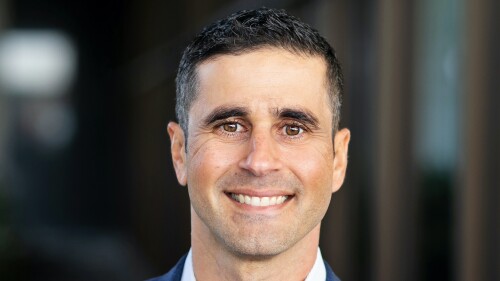Climate change and its relationship to water management are having a profound impact on cities, compounded by the global trend toward urbanization. Harvard University recently hosted a wide-ranging discussion titled, “The Future of Cities: Water,” which assembled an international panel of experts to provide insights into the challenges of water-related climate change as well as potential solutions for a broad range of city environments.
Moderated by ULI member John Macomber, senior lecturer in finance at Harvard’s business school, the panel included Loreta Castro Reguera, visiting scholar in landscape architecture at the Harvard Graduate School of Design as well as design director for Taller Capital, Mexico; John Fernandez, director of the MIT Environmental Solutions Initiative; Joyce Coffee, founder and president of Climate Resilience Consulting; Efosa Ojomo, global prosperity lead at the Clayton Christensen Institute for Disruptive Innovation; and Jim Matheson, chairman and CEO of Oasys Water and senior lecturer in entrepreneurship at HBS.
In addition to the issuesassociated with having toomuch water (flooding and sea-level rise),there are consequences of not having enough water (drought,extreme heat, and wildfires), all of which are having a devastating effect onthe built environment and the populations of cities around the world. AsMacomber noted in his introduction, many of the issues surrounding water areparadoxical. “The future of cities is that they’ll obviously be impacted bywater, and it’s often two sides of the same coin,” he said. “While there isheavy rain flooding, there is also drought; and while there is sea-level rise,there is often extreme heat; and while there is excessive rain, there are alsowildfires—such as in California last year.”
A prime example ofthe contrasting effects of climate change on water is Houston, the fourth-largest city in the United States with apopulation of 2.3 million. Located 50 miles (80 km) inland, the city averagesapproximately 50 inches (127 cm) of rain per year, but in 2011, the regionaveraged less than 15 inches (38 cm). Combined with extreme heat (2011 was thehottest summer on record in Texas at the time), the city experienced a droughtthat killed 66 million trees, greatly reducing the natural cooling effects forthis hot city. Six years later, in late August 2017, Hurricane Harvey dumpednearly 40 inches (101 cm) of rain on Houston in less than a week, causing one-third of the city to beunderwater during the peak of the storm and inflicting tens of billions ofdollars in property damage.
Theresponse to extreme weather events and ongoing water issues across the globe rangesfrom an array of support services from national governmental agencies (like FederalEmergency Management Agency), the private sector, and nonprofit organizationsin developed nations to none at all in emerging economies. And those areaslacking access to capital and information are likely to suffer more direconsequences. But access to information and resources does not always translateinto action.
Forexample, California’s largest power utility, Pacific Gas & Electric, whichfiled for bankruptcy after admitting that its equipment may have causedthe devastating fires that burned down 240 square miles (622 sq km) of NorthernCalifornia communities last year, cut power to over 700,000 homes andbusinesses in early October as a preventative measure, causing a majordisruption to residents and businesses. “You could argue that PG&E should have spent more money onresilience,” said Macomber. “And that that failure to invest in resilience atPG&E led to wildfires, death, and destruction of those communities byfire.”
Duringthe panel discussion, Ojomo, Matheson, and MIT’s Fernandez focused on the broader picture of addressing theeffects of climate change and water through innovation and systemic change. Regueraand Coffee took a more localized approach, sharing best practices of projectsthat exemplified how two communities are introducing climate resilience measuresthat are paying dividends. “While water and climate change are two of the mostsignificant global challenges, global warming is truly a global problem thatneeds to be solved globally,” said Matheson. “But water is a series ofhyperlocal challenges than can be solved.”
Reguera was the design director and technical coordinator of the Hydropuncture project in Mexico City, which earned the Universidad Nacional Autónoma de México the Global LafargeHolcim Awards Gold 2018 and LafargeHolcim Awards Gold 2017 for the region of Latin America. The project was implemented in the most populous (and lowest income) of Mexico City’s 16 boroughs, Iztapalapa, which has a population of approximately 2 million. Like many locales affected by climate change, the water issues are double-edged. While tap water is of poor quality and in short supply (half of the residents do not have daily access to water), the region is also plagued by flooding caused by heavy downpours six months of the year.
Using “acupuncturalinterventions” that have been successful in projects across the globe, the Hydropunctureproject diverts rainwater from the Sierra de Santa Catarina area to preventurban flooding that would normally inundate city streets. It also improves thequality of water that infiltrates the subsoil and increases the volume of waterthat replenishes the water table by 35 percent. The water managementinfrastructure was designed to capture rainwater runoff, which is treatedthrough a combined system of biological anaerobic ponds and wetlands. Thedesign of Hydropuncture also includes a public recreational landscape space.
More important, theproject serves the needs of 28,000 of Iztapalapa‘s residents without relying onmajor investment from the central government. “It’s starting to make adifference,” said Reguera. “We’re not saying that we shouldn’t rely ontraditional systems, but what we shouldn’t do is [use them solely], because wecan come up with creative ideas that we can pair with traditional systems,using newer technologies and ideas that are design-based.”
Coffeediscussed the resilience work that is being done in Miami Beach, based on thefindings of a 2018 ULI Advisory Servicespanel,of which she was chair. A city of 100,000 that attracts millions of visitorsevery year, Miami Beach is greatly atrisk of sea-level rise and experiences severe flooding from king tides,rainfall, and groundwater. Using nearly $700 million in funding financedindependently of federal and state funds, thecity has taken a number of measures to address the flooding with a stormwatermanagement program, including improving drainage systems; elevating roads and public seawalls; installing pumps to replaceaging gravity stormwater pipes; replacing water, wastewater, and other utilities; increasing seawall height; and other measures.
Butdespite the efforts, the advisory panel concluded, it may not be enough. “The major complication,which I think is also getting in the way of the ultimate resolution of thefuture of Miami Beach, is that the populace is not yet aware of the crisis thatthey face,” said Coffee. “So, it’s that lack of awareness and a lack of awillingness to embrace the science. And the fact is that there is a potentialneed for retreat, even for the 1 percent, from these glorious places.” Underscoringconcern for the fairness of a process of managed relocation and the possibleresistance of destination cities, Coffee added, “There’s one thing about retreat that we need to beclear about. It needs to have agency. When people leave, they need to go to aplace that’s receiving them with grace.”
Whileretreat, or abandonment of cities due to sea-level rise or flooding may seemlike a far-off prospect, it is no less real. According to a study published in the Proceedings of the National Academy of Sciences,at least 414 towns, villages, and cities across the United States would facerelocation—even if humanity were to stop all carbon emissions today. Theimmediate effects of climate change may be less extreme,but not without consequence. From a real estate perspective, there will be aprofound change in investment behavior in terms of location, as investors willdirect capital toward communities taking a proactive approach to climateresilience, while disinvesting in communities that are clearly threatened and notable to proactively deal with the threat, said Macomber (who has served on multipleclimate resilience panels for ULI). “Investors should now price in the factthat there are going to be more and more threats to their properties, andthey’re going to have to spend more money defending the property, either withphysical infrastructure or with financial tools, including more expensiveinsurance and greater replacement reserves.”
Segmenting by problem(flood or drought), geography (developed economy or emerging economy), andnature of solution (public sector–led or private sector–led) will allow realestate professionals to better anticipate and invest, as they acknowledge thefuture impacts of water in cities.


![Western Plaza Improvements [1].jpg](https://cdn-ul.uli.org/dims4/default/15205ec/2147483647/strip/true/crop/1919x1078+0+0/resize/500x281!/quality/90/?url=https%3A%2F%2Fk2-prod-uli.s3.us-east-1.amazonaws.com%2Fbrightspot%2Fb4%2Ffa%2F5da7da1e442091ea01b5d8724354%2Fwestern-plaza-improvements-1.jpg)

